一.什么是Numpy
Numpy(Numerical Python)是一个开源的Python科学计算库,用于快速处理任意维度的数组。Numpy支持常见的数组和矩阵操作。对于同样的数值计算任务,使用Numpy比直接使用Python要简洁的多。Numpy使用ndarray对象来处理多维数组,该对象是一个快速而灵活的大数据容器。
二.ndarray与Python原生list运算效率对比
import random
import time
import numpy as np
a = []
for i in range(100000000):
a.append(random.random())
1.python原生list运算
通过%time魔法方法,查看当前行的代码运行一次所花费的时间
%time sum1=sum(a)
使用原生Python计算时间的结果如下图,4.06s
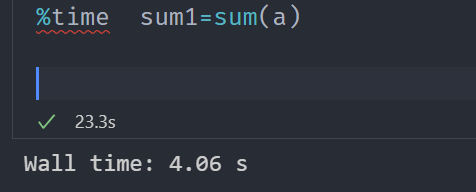
2.使用ndarray运算方法
b = np.array(a)
%time sum3=np.sum(b)
使用ndarray的结果如下图,496ms,从中我们看到ndarray的计算速度要快很多,节约了时间。
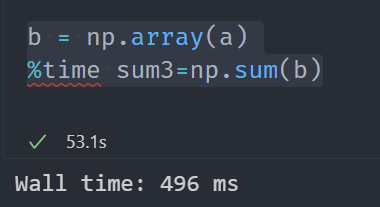
Numpy专门针对ndarray的操作和运算进行了设计,所以数组的存储效率和输入输出性能远优于Python中的嵌套列表,数组越大,Numpy的优势就越明显。
三.ndarray的优势
1.内存块风格
ndarray存储数据的时候,数据与数据的地址都是连续的,这样使得批量操作数据元素时速度更快
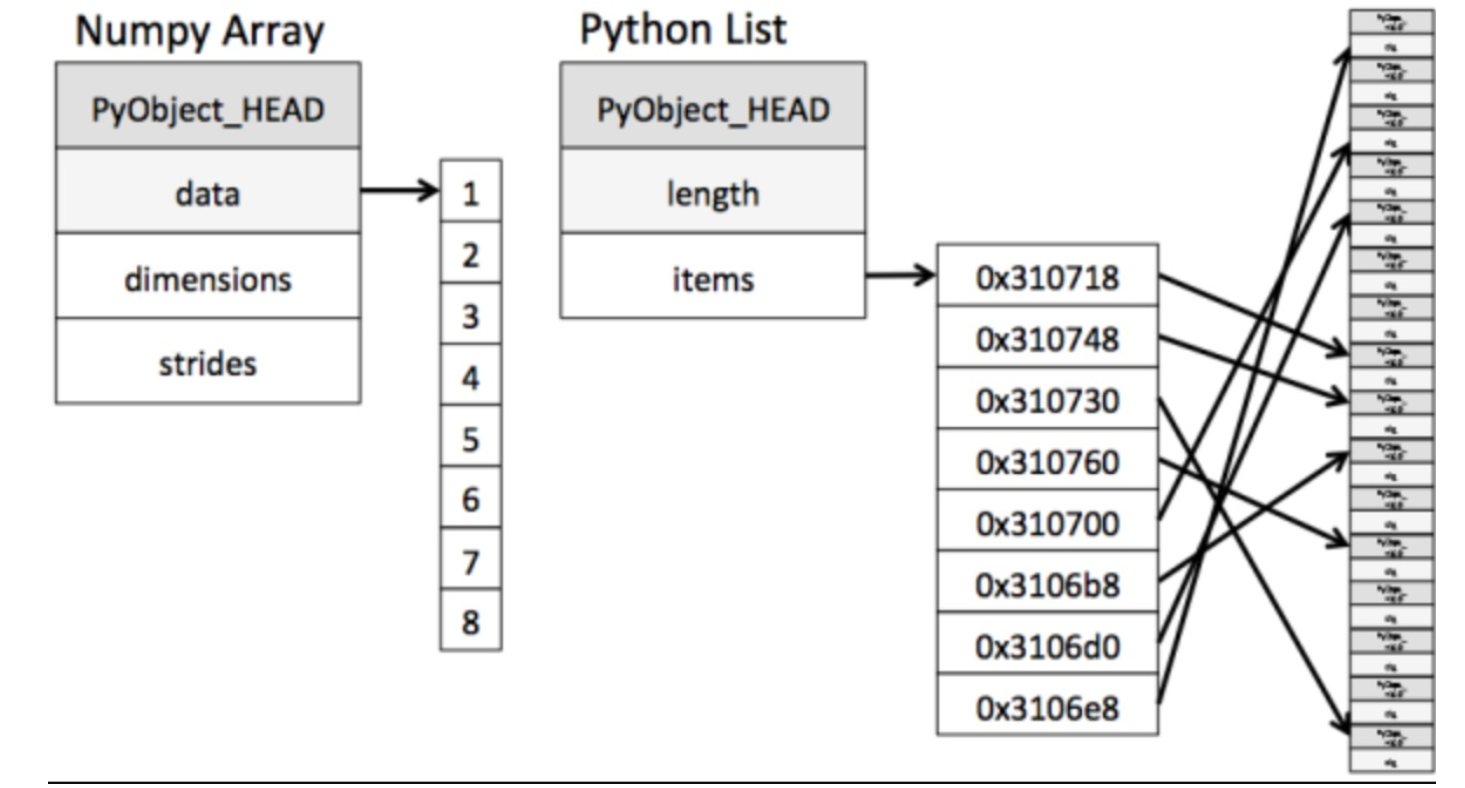
从图中可以看出ndarray在存储数据的时候,数据与数据的地址都是连续的,这样就给使得批量操作数组元素时速度更快。这是因为ndarray中的所有元素的类型都是相同的,而Python列表中的元素类型是任意的,所以ndarray在存储元素时内存可以连续,而python原生list就只能通过寻址方式找到下一个元素。
2.ndarray支持并行化运算
numpy内置了并行运算功能,当系统有多个核心时,做某种运算时numpy会自动做并行计算
3.效率远高于纯python代码
numpy底层用C语言编写,内部解除了GIL(全局解释器锁),对数组的操作速度不受python解释器限制,所以效率高于纯python代码。
四.数组的属性、形状、类型
1.数组的属性

查看数组的属性信息
score = np.array([
[12,3,4,5],
[14,5,68,8],
[46,89,6,432]
])
# 数组维度的元组 三行四列(3, 4)
score.shape
# 数组维数 2
score.ndim
# 数组中的元素数量 12
score.size
# 一个数组元素的长度(字节) 4
score.itemsize
# 数组元素的类型 dtype('int32')
score.dtype
2.数组的形状
# 一维数组
a = np.array([2,4,5,6])
a
a.shape
# 二维数组
b = np.array([
[1,4,6],
[4,66,2]
])
b
b.shape
# 三维数组
c = np.array([
[
[1,4,6],
[4,66,2]
],
[
[2,43,3],
[1,3,24]
],
])
c
c.shape # (2, 2, 3) 第一个2是有两个二维数组,第二个2是每个二维数组中有两个一维数组,3是每个一维数组有3个元素
3.数组的类型
# 指定类型为浮点型
b = np.array([[1,4,6],[4,66,2]],dtype=np.float32)
b
# 指定字符串类型
arr = np.array(["python,tf,touch"],dtype=np.string_)
arr #array([b'python,tf,touch'], dtype='|S15' 15代表字符串长度
五.数组的基本操作
1.生成数组的方式
1.1 生成 0 1 数组
ones = np.ones([3,2]) # 3行2列
ones
np.zeros_like(ones) # 变为全0
结果如下:
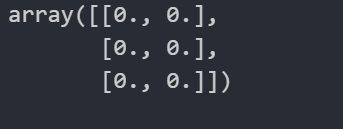
1.2从现有数组生成
a = np.array([[1,34,5],[4,65,3]])
a
1.2.1 比较array和asarray区别
a1 = np.array(a) # 深拷贝
a1
a2 = np.asarray(a) # 浅拷贝
a2
# 修改第一个数组第一个元素为1000
a[0,0] = 1000
# array方法还是1
a1 # 第一个数组第一个元素为1
# asarray方法
a2 # 第一个数组第一个元素为1000
1.3生成固定范围的数组
# 从0-40生成5个数
np.linspace(0,40,5) #array([ 0., 10., 20., 30., 40.])
# 创建等差数组-指定步长 从10-60,步长为5生成数据
np.arange(10,60,5) #array([10, 15, 20, 25, 30, 35, 40, 45, 50, 55])
# 创建等比数列 生成10^x
np.logspace(0,2,3) #array([ 1., 10., 100.])
1.4生成随机数组
import matplotlib.pyplot as plt
#生成均值1.75,标准差为1的正态分布数据,100000000个
x1 = np.random.normal(1.71,1,100000000)
print(x1) #[0.37338478 1.47709387 1.40373188 ... 1.54515649 1.50143846 2.03444761]
#画图看分布状况
#创建画布
plt.figure(figsize=(10,4),dpi=100)
# 绘制直方图
plt.hist(x1,1000)
plt.savefig("./pic2.png")
#显示图像
plt.show()
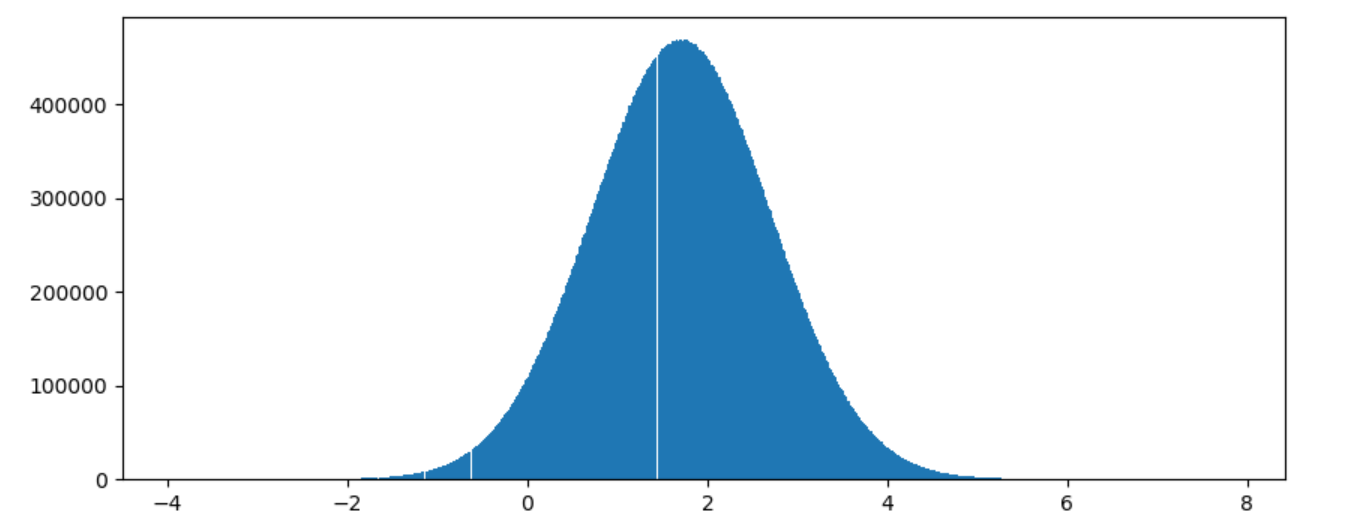
2. 均匀分布
# 下界-1,上界为1,生成均匀分布的随机数
x2 = np.random.uniform(-1,1,100000000)
x2
# 画图看分布状况
# 1)创建画布
plt.figure(figsize=(10,4),dpi=100)
# 2)绘制直方图,分成1000组
plt.hist(x2,1000)
# 3)显示图像
plt.show()
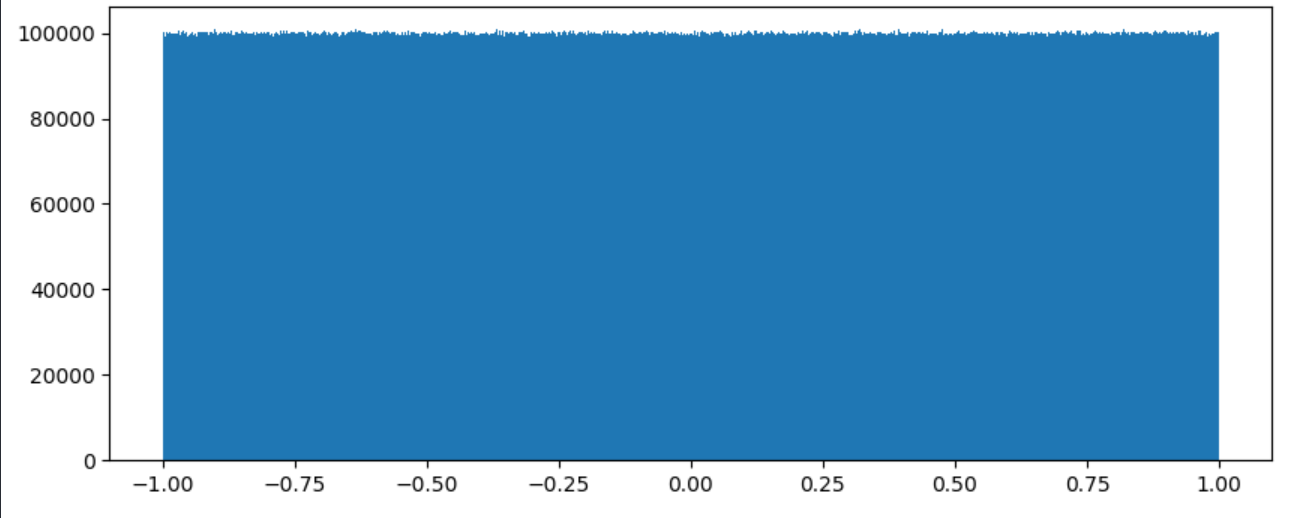
3. 数组的索引、切片
3.1 取数
import numpy as np
a = ([
[[1,4,5],[2,3,4]],
[[4,5,76],[2,4,6]],
])
# 取出第1个二维数组的第1个数组的第2个元素
a[1][1][2] # 6
3.2 数组的去重
import numpy as np
a = np.array([[1,3,4],[3,5,7]])
a
np.unique(a) #array([1, 3, 4, 5, 7])
4. ndarray运算
4.1 逻辑运算
import numpy as np
# 40-100之间的数,10行5列
score = np.random.randint(40,100,(10,5))
score
# 取出从第六行开始,每行的0-2列
test_score = score[6:,0:3]
test_score
# 查看元素是否大于60
test_score > 60

score = np.random.randint(40,100,(10,5))
# 大于60的赋值为1
score[score > 60] = 1
score
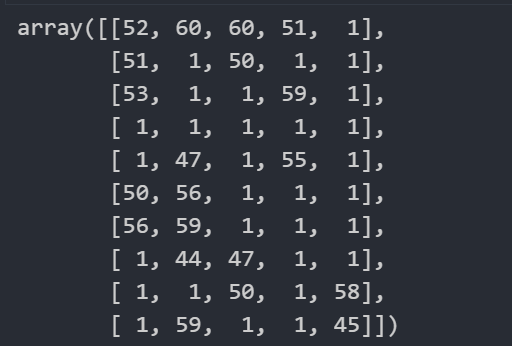
4.2 通用判断函数
np.all 都满足才返回True
# 前两个同学的所有科目
score = np.random.randint(40,100,(10,5))
test_score = np.all(score[0:2,:] >60)
test_score
score
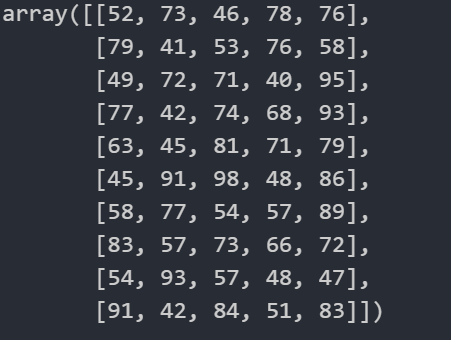
np.any 判断有任意满足条件返回True
test_score = np.any(score[0:2,:] > 70)
test_score # True
np.where 三元运算符
# 取前4名学生的前三门课
temp= score[0:4,0:3]
# 成绩大于60置为1,否则0
np.where(temp > 60,1,0)

4.3 统计运算
temp= score[:4,:]
temp
#array([[52, 73, 46, 78, 76],
# [79, 41, 53, 76, 58],
# [49, 72, 71, 40, 95],
# [77, 42, 74, 68, 93]])
# 取最大的元素
np.max(temp) # 95
# 取平均值
np.mean(temp) # 65.65
# 每列的最大值
np.max(temp,axis=0) # array([79, 73, 74, 78, 95])
# 每行的最大值
np.max(temp,axis=1) # array([78, 79, 95, 93])
# 最大值所在位置是第14个元素
np.argmax(temp) #14
# 每列最大值所在位置
np.argmax(temp,axis=0) #array([1, 0, 3, 0, 2], dtype=int64)
5. 数组间的运算
5.1数组与数的运算
a = np.array([[1,3,4],[5,7,8]])
# 每个元素都 + 3
print(a + 3)
b = ([1,3,5])
print(b * 3) #[1, 3, 5, 1, 3, 5, 1, 3, 5]
5.2数组与数组的运算,要满足广播机制:
# (1) 数组中的某一维度等长
# (2) 其中一个数组的某一维度为1
arr1 = np.array([[1,2,3,4,5,5],[1,2,3,4,5,6]]) # 两行6列
arr2 = np.array([[1],[3]]) # 两行1列
print(arr1 + arr2)
5.3矩阵的运算
矩阵乘法遵循准则:
(M行N列)*(N行L列)=(M行,L列)
x1 = np.array([
[80,32],
[34,67],
[36,74]
])
x2 = np.array([[3],[1]])
print(np.dot(x1,x2))
# [[272]
# [169]
# [182]]
print(np.matmul(x1,x2))
# [[272]
# [169]
# [182]]
x3 = 10
print(np.dot(x3,x1))
# [[800 320]
# [340 670]
# [360 740]]
print(np.matmul(x3,x1)) # matmul不支持矩阵和标量的乘法
